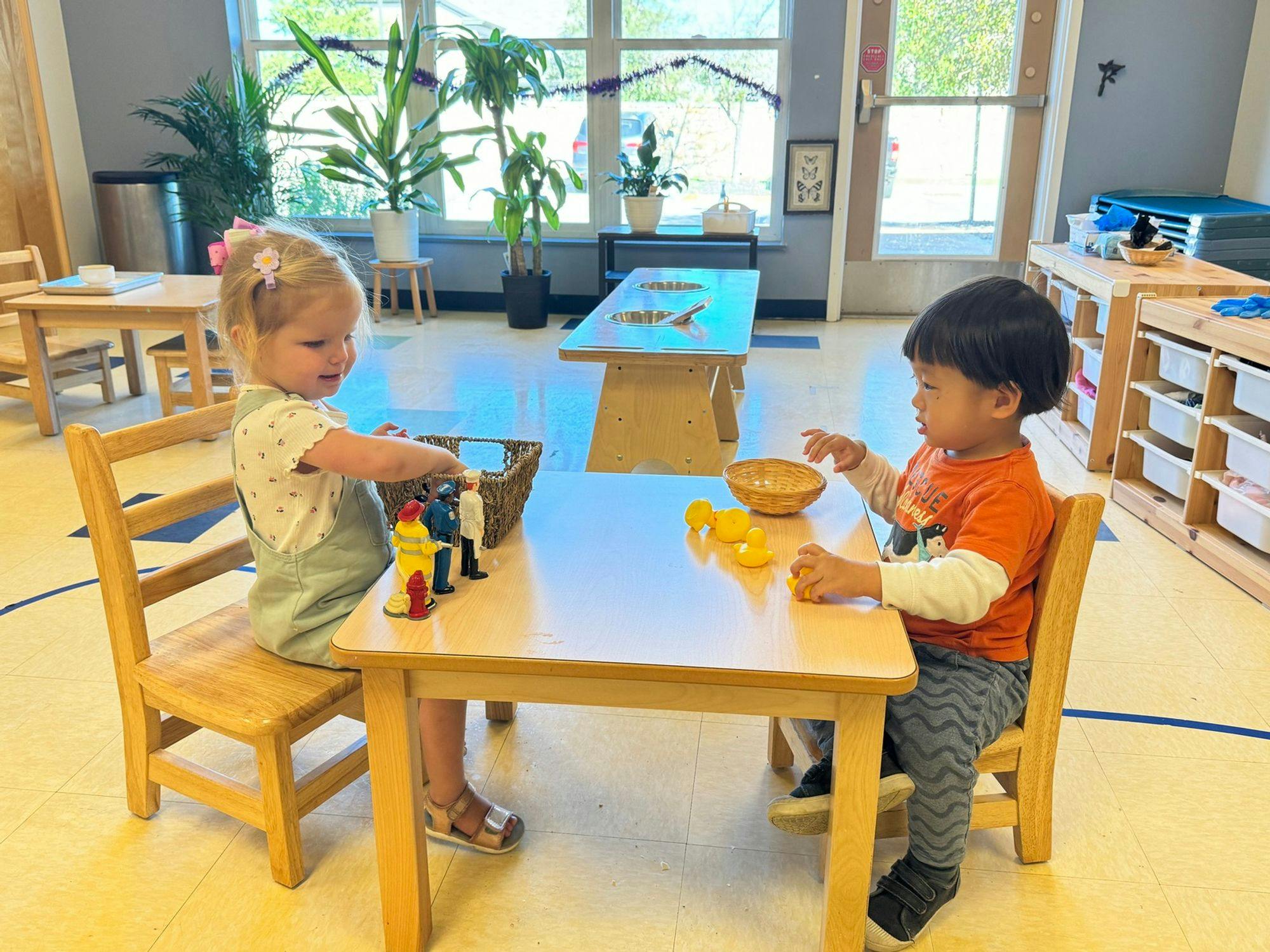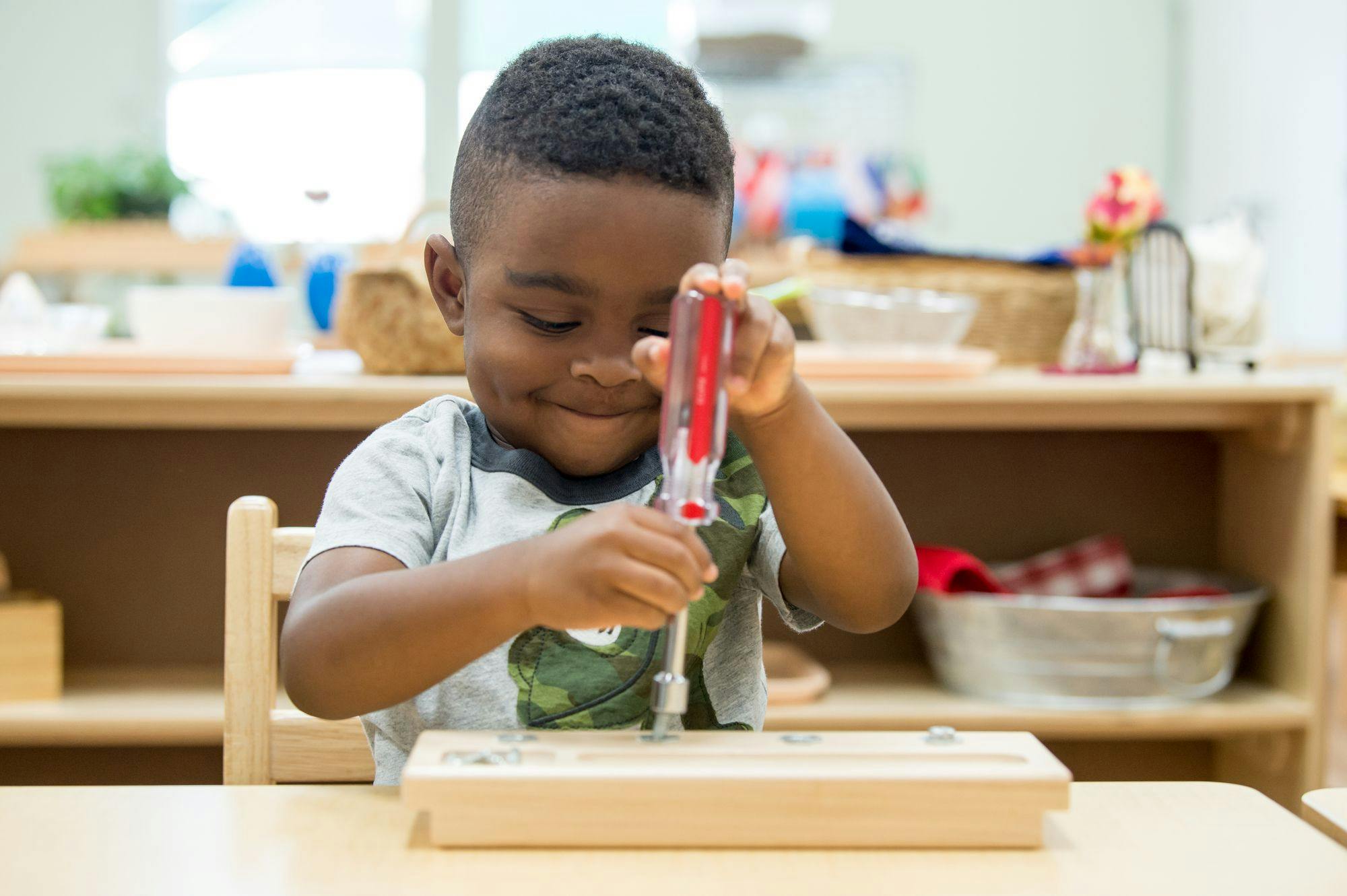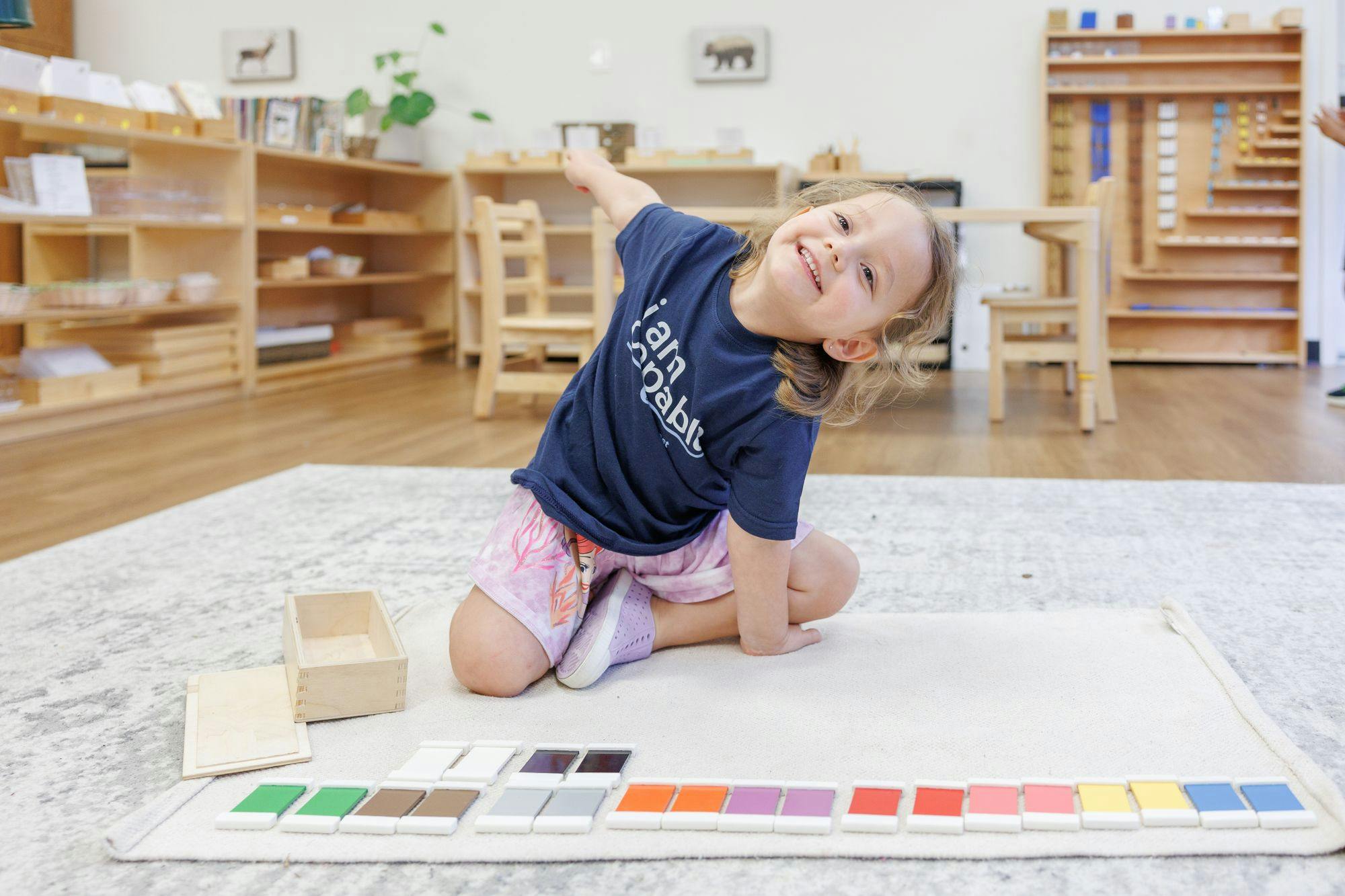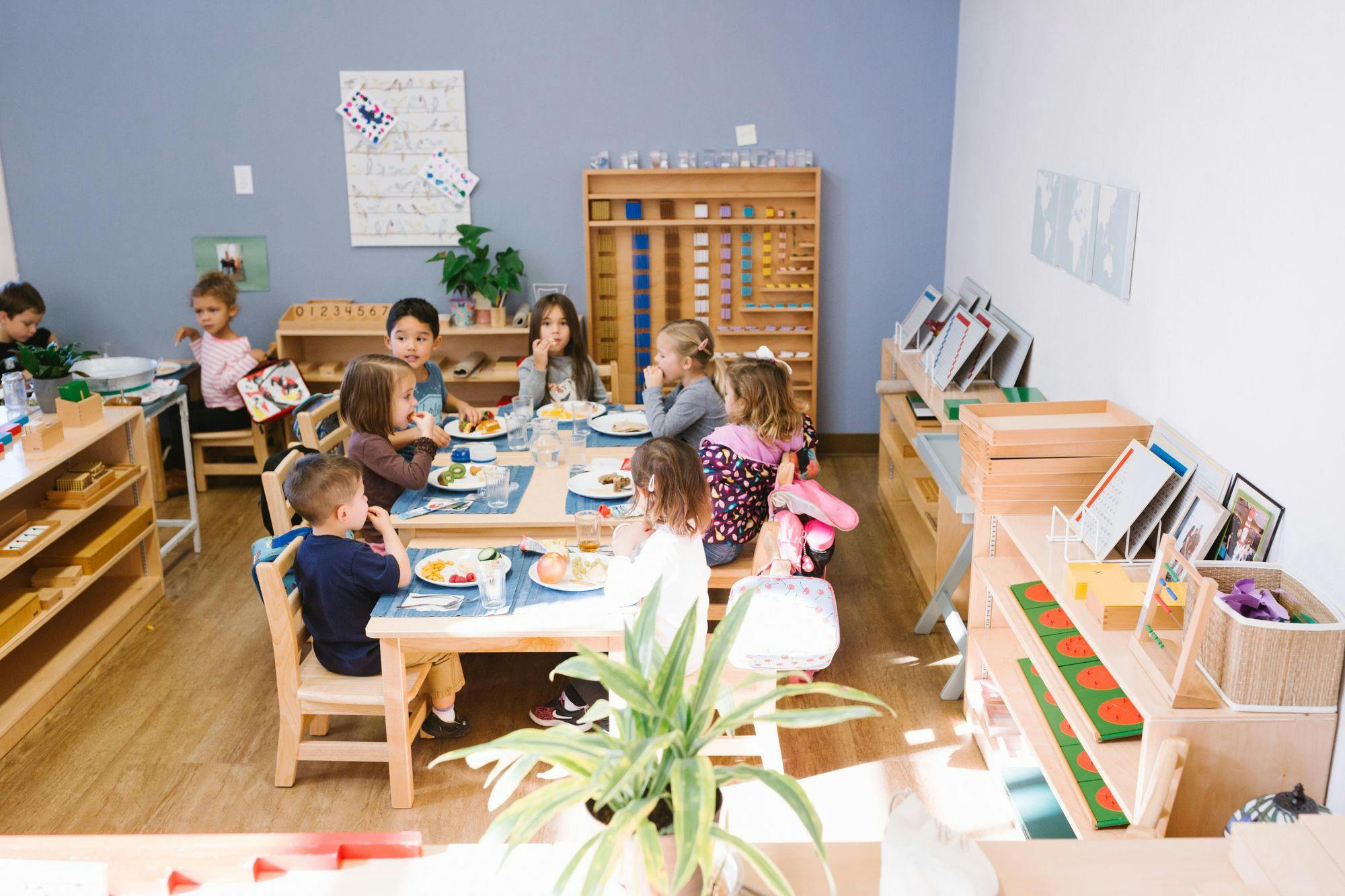Guidepost
Montessori
at Prosperity.
Nido (10 weeks to 18 months)
Toddler (18 months to 3 years)
Children's House (3 to 6 years)
Spanish Immersion (2 to 6 years)
learn more about our programs & approach.
What makes Montessori unique? How will Guidepost support your child at each stage of development? What does a typical day look like? In this info session, we discuss the Montessori curriculum and approach, schedule options and what a typical day looks like, and how we collaborate and communicate with parents.
discover the benefits of our spanish immersion programs.
Children under the age of six absorb language effortlessly, which is why we are pleased to offer bilingual environments. In our Spanish Immersion program, children learn both Spanish and English literacy skills, however, the prevailing language spoken throughout the day is Spanish. The overall emphasis on Spanish rapidly increases fluency, as children feel naturally compelled to communicate with their Spanish-speaking guides. Learn more about our Spanish Immersion program here
what parents are saying.
what makes us stand out.
At Guidepost, we join with parents on their mission to help their child grow and live well. Together, we design an education to empower each child to build the knowledge, skills, and confidence she needs to craft an independent, flourishing life.
Though there are many differences between the conventional approach and Guidepost, here are some of the most important:
Read more about the Guidepost Montessori approach.
At Guidepost, our mission is to support each child in achieving her own independence. To do this, we help her gain the knowledge, build the skills, and craft the personal character she needs to flourish. Above all, our goal is to cultivate joy—in the pursuit of knowledge, in effort applied to work worth doing, in the achievements of herself and others, and in taking the steps to author her own life.
Read more about the Guidepost Mission.
Learn about the key milestones we support—from infancy through high school.
Read more about why we educate for independence, and how we support independence for infants, toddlers, preschoolers, and elementary-age children.
Montessori education is known world-wide for having positive impacts on both academics and social and emotional skills.
At Guidepost Montessori, when we design an environment to meet the developmental needs and interests of children alongside personalized care and support, the child can learn advanced skills at an accelerated pace.
Our students, for example, regularly learn to read by the time they’re 4-years-old and can perform all four math operations with 4-digit numbers by the end of their Kindergarten year.
The language and math skills of our kindergartners are on a par with what children in conventional programs learn in 3rd grade or beyond! What’s more, our students learn advanced academics joyfully—while simultaneously developing deep focus, self-discipline, and positive social skills.
Read more about the Guidepost Montessori advanced Language Curriculum in Children’s House.
Read more about the Guidepost Montessori advanced Math Curriculum in Children’s House.
Yes! The third year of our Children’s House program, designed for 3- to 6-year-olds, is the capstone kindergarten year. In this year, the child has been well-prepared to experience an explosion of literacy, learn advanced math concepts, and use her hard-won ability to focus, problem-solve, and persist through challenges to then make advanced gains across the curriculum. Children who continue with Guidepost through Kindergarten are often well-ahead of their peers when they enter 1st grade.
Learn more about the capstone Kindergarten year at Guidepost.
Learn more about the next exciting stage: the Guidepost elementary program.
Following elementary, students continue on to our Montessori middle and high school, the Academy of Thought & Industry: a school that combines a classical liberal arts emphasis on history and great books, and a Montessori emphasis on independence and agency.
At Guidepost, we want to make the best education the best for children and parents. This is why we provide year-round, extended-day programming at no extra cost, enabling consistent and uninterrupted access to the care and developmental support parents expect. We invite you into your child’s world—with daily photo and video updates, regular milestone meetings, and parent-child events that showcase your child’s progress. We work to understand your unique context and needs, so that we can provide support for milestones at home as well as at school.
In everything we do, we strive to cultivate joy as you watch your child grow!
Read about Transparent Classroom, the app that provides a window into your child’s day.
Read about a Work-with-me event at Guidepost at Mahwah.
Read about recent family events such as Grandparent’s Day, a cultural celebration, and a spring celebration.
explore our programs.
Our approach is designed to empower each child to achieve independence by combining our hands-on curriculum with personalized learning to create an environment where curiosity flourishes, independence grows, and academic excellence is a natural outcome.
We want your child to see and believe: “I am capable!”
start your journey with us.
Our team of admissions specialists are ready to meet you and get you started on your journey within the Guidepost community. We're here to provide your family with the information and confidence you need to enroll in one of our programs.




